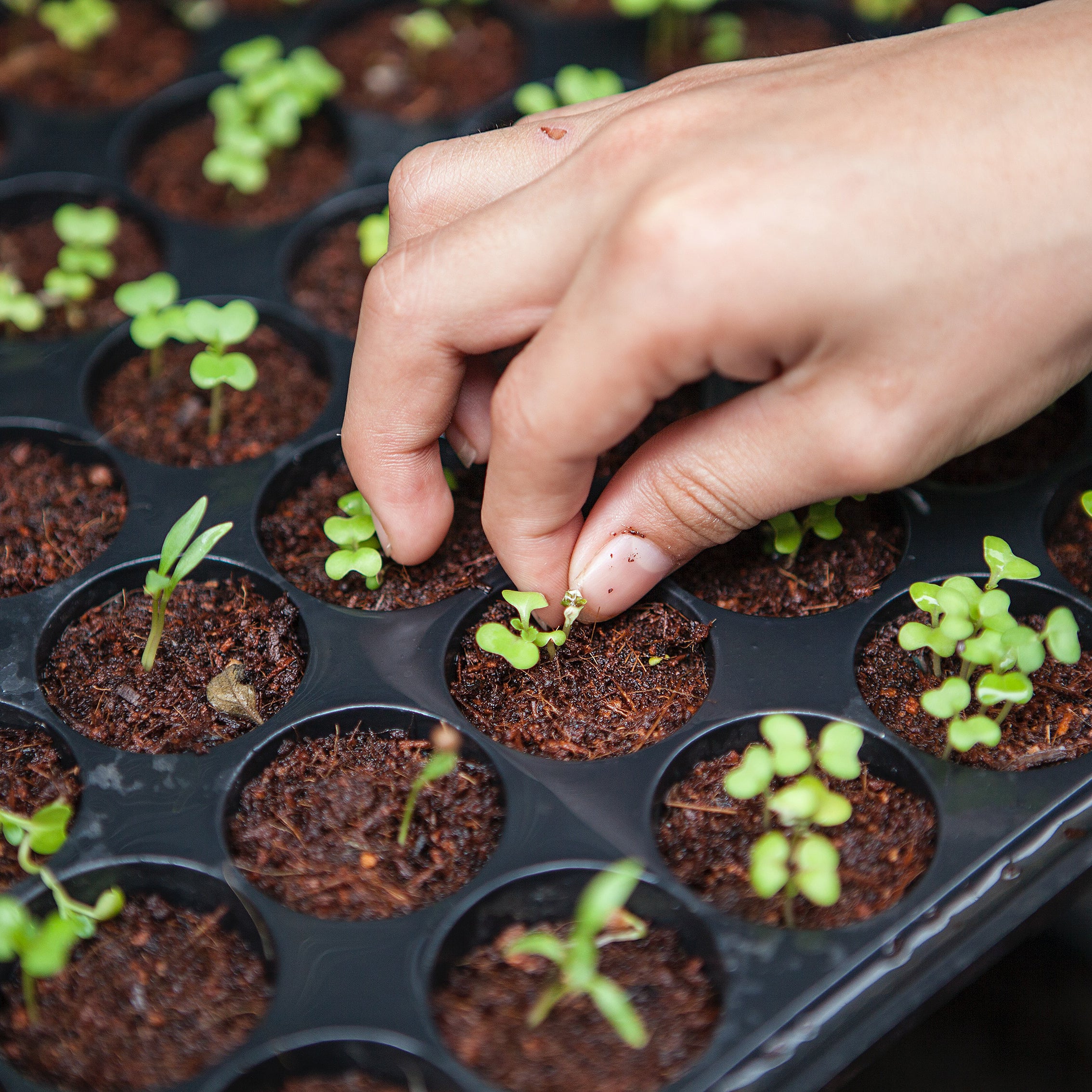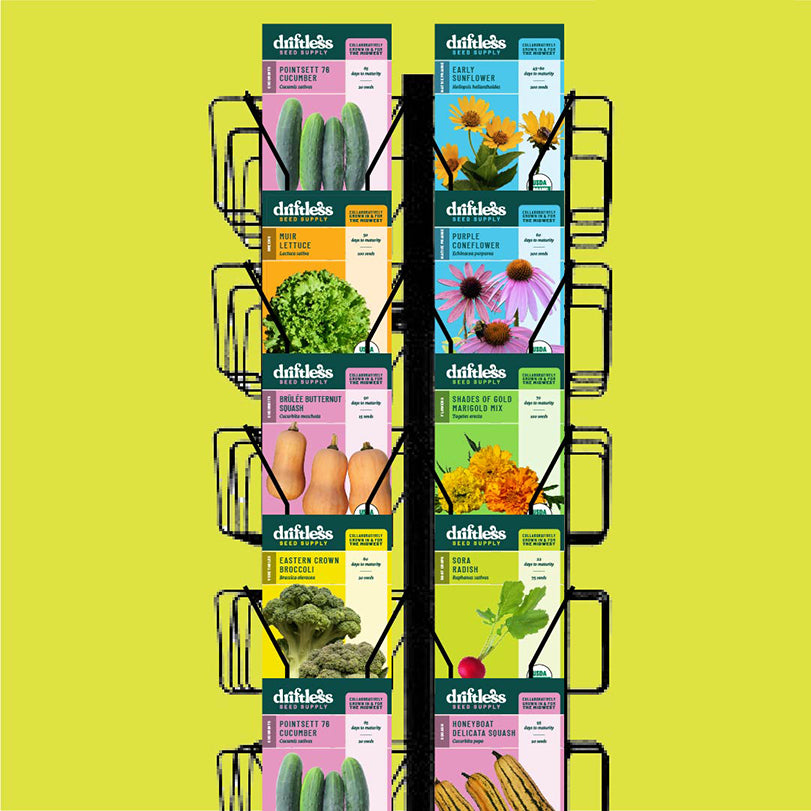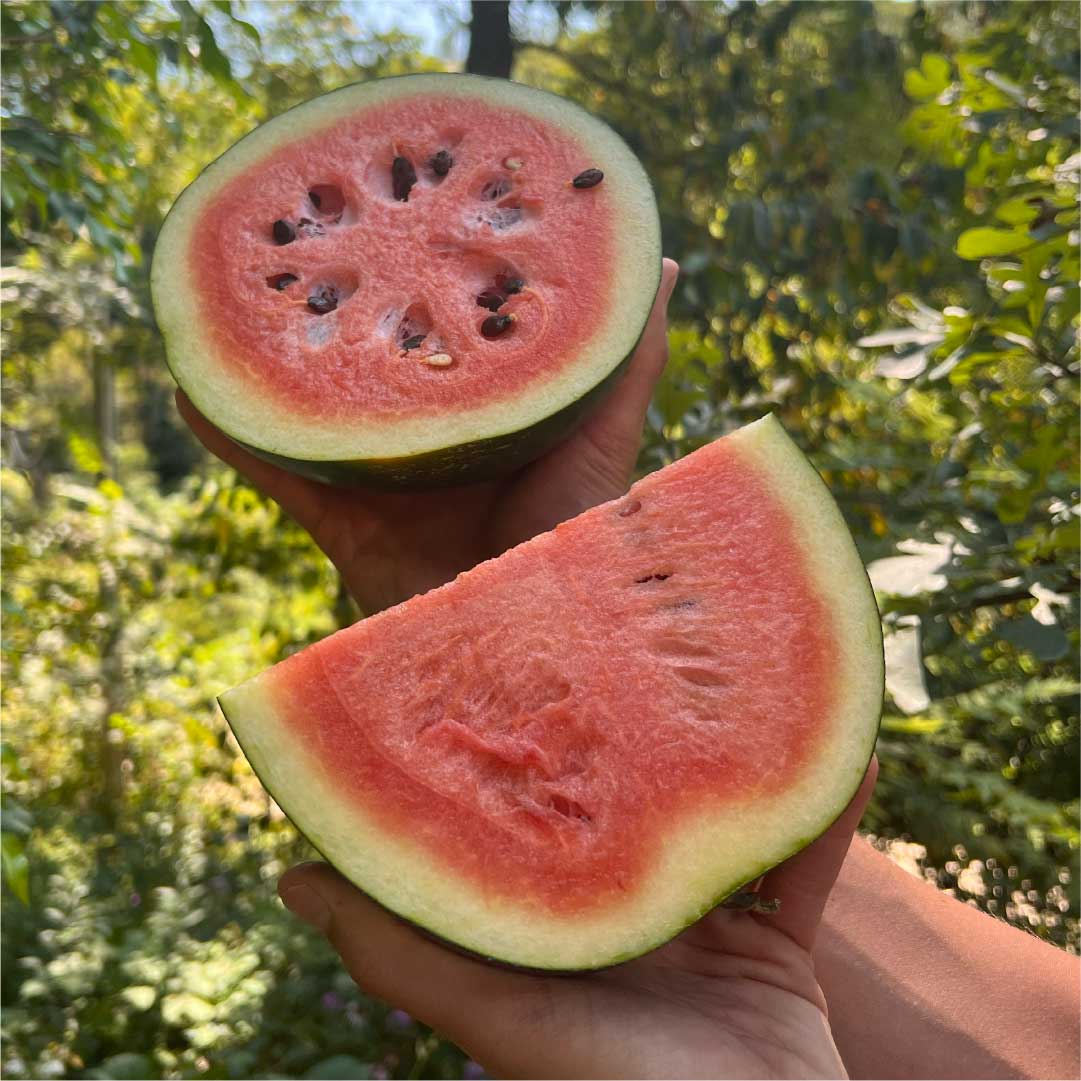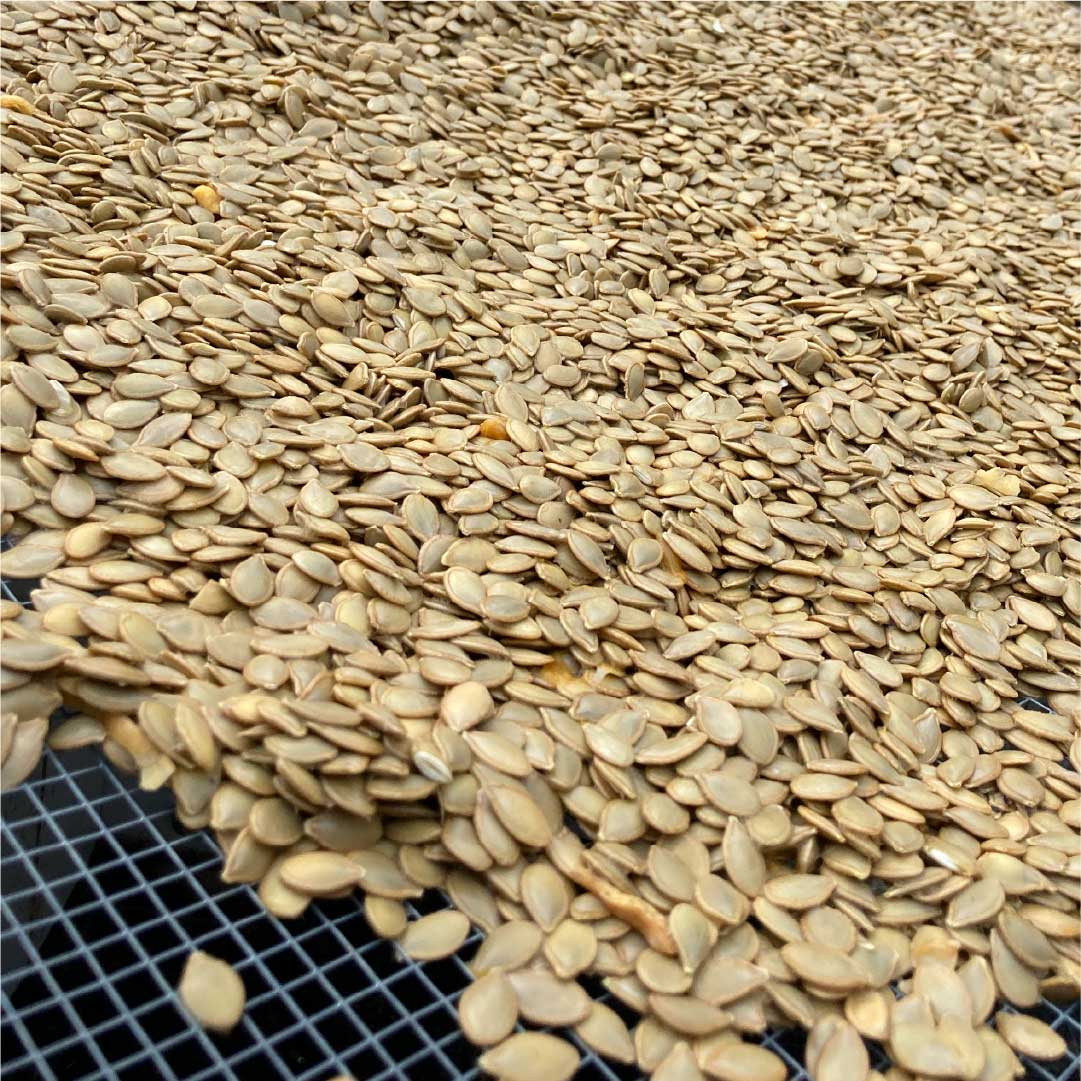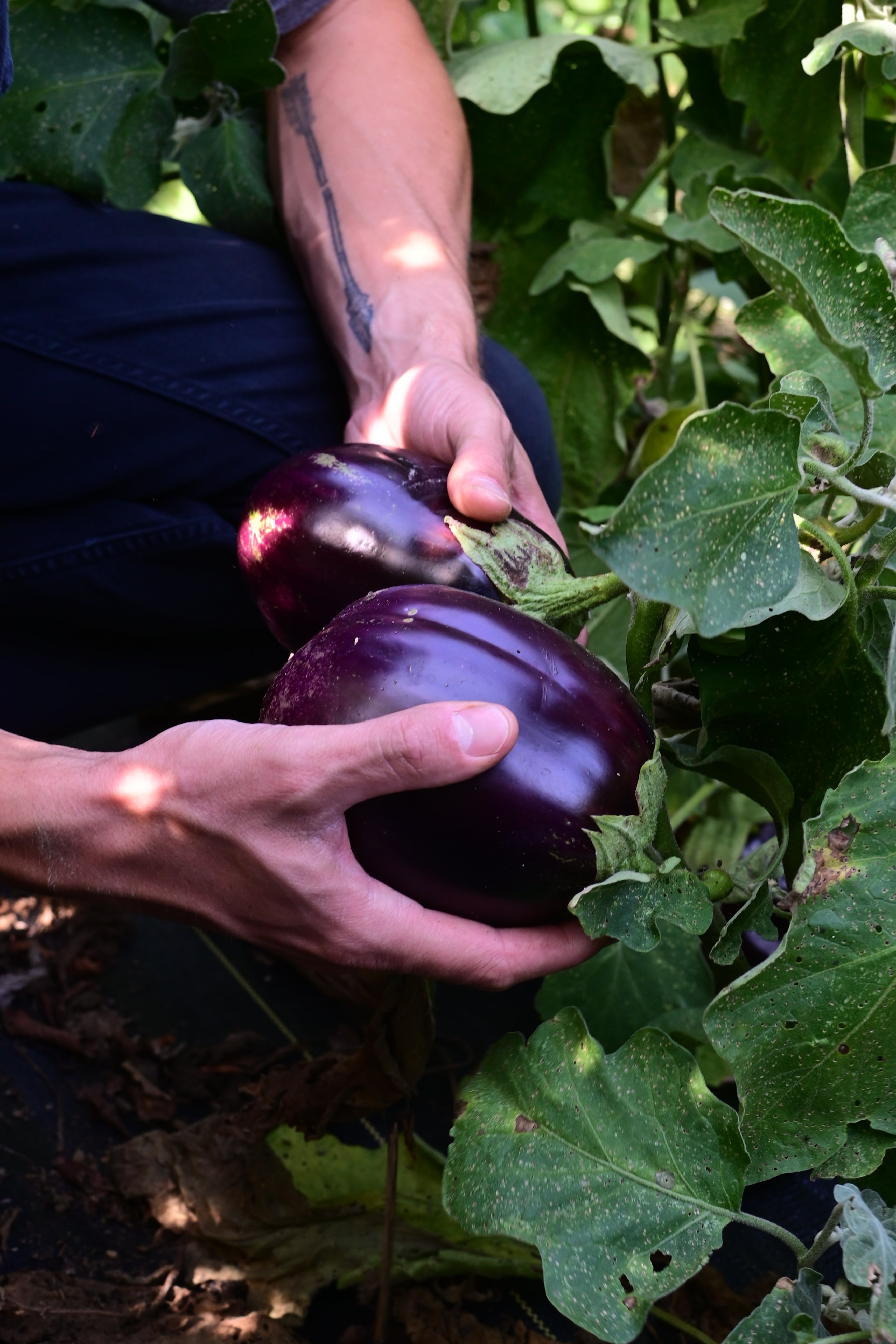
Driftless Seed Supply Grower Resources
Eggplant Growing Resources
Historical and Cultural Significance
Eggplant (Solanum melongena) is native to India and China and is a member of the Solanaceae family. It is a tender perennial grown as a warm-season annual in many regions, including the Midwest. Eggplants are known for their diverse fruit shapes and colors, including purple, black, green, pink, white, red, and yellow.
Site Selection and Soil Preparation
- Sunlight Requirements: Full sun is essential for optimal growth.
- Soil Type: Light, warm, well-drained, and fertile soil is ideal.
- Soil pH: Should be between 5.5 and 7.5.
- Soil Preparation: Avoid soils with high organic matter as it can result in excessive foliage at the expense of fruit.
Starting Seeds
- Indoor Start: Begin 6-10 weeks before the last frost date.
- Transplant Size: Best transplants are between 4 and 6 inches tall without flower buds.
- Soil Temperature: Maintain at 80°–90°F for germination and 70°F thereafter.
Transplanting
- Transplant outdoors late spring or early summer once the weather has settled and nights are above 40°F.
- Space transplants 18" apart in rows 30-36" apart, or 2 rows on plastic mulch, 18-24" between plants.
Watering and Fertilizing
- Watering: Eggplants require consistent moisture for optimal growth.
- Fertilizing: Apply a balanced fertilizer during the growing season. Avoid over-fertilization, as too much nitrogen can lead to excessive foliage.
When cultivating eggplants organically, it's important to provide balanced nutrition to support their growth and fruit production. Here are specific organic NPK (Nitrogen, Phosphorus, Potassium) recommendations per acre for eggplant cultivation:
Nitrogen (N):
- Requirement: Eggplants have a moderate to high nitrogen requirement.
- Recommendation: Apply 60-80 pounds of Nitrogen per acre throughout the growing season.
- Organic Sources: Feather meal, blood meal, or a high-quality composted manure can be used. These should be incorporated into the soil before planting and can be supplemented with additional sidedress applications during the growing season.
Phosphorus (P₂O₅):
Requirement: Phosphorus is essential for root development and early plant vigor.
Recommendation: Apply 40-60 pounds of Phosphorus (as P₂O₅) per acre.
Organic Sources: Bone meal, rock phosphate, or compost rich in phosphorus can be good sources.
- Potassium (K₂O):
- Requirement: Potassium is crucial for overall plant health and fruit quality.
- Recommendation: Apply 60-80 pounds of Potassium (as K₂O) per acre.
- Organic Sources: Greensand, sulfate of potash magnesia (langbeinite), or wood ash are suitable options.
Additional Considerations:
- Soil Testing: Conduct a soil test prior to planting to determine the existing soil nutrient levels and adjust the fertilizer recommendations accordingly.
- Application Timing: Apply a portion of the fertilizers before planting (pre-plant application) and the rest as side-dressing during the growing season, especially during periods of rapid growth or just before flowering.
Pest and Disease Management
- Aphids: Manage with insecticidal soaps or neem oil. Encourage natural predators like ladybugs and lacewings.
- Flea Beetles: Use fabric row covers for newly set transplants for control.
- Colorado Potato Beetles: Regularly check undersides of leaves and crush any orange egg masses.
- Verticillium Wilt: Practice crop rotation to avoid this disease.
Harvesting
- Harvest eggplants when they reach the desired size - specific to each variety - and have a shiny, unblemished surface.
- Use shears to clip the fruit stem, as pulling can damage the plant.
Post-Harvest Handling and Storage
- Handle eggplants carefully to prevent bruising.
- Store at cool temperatures with high humidity to maintain freshness.

